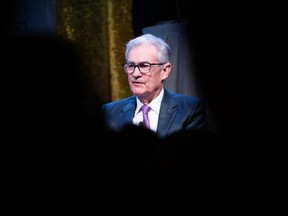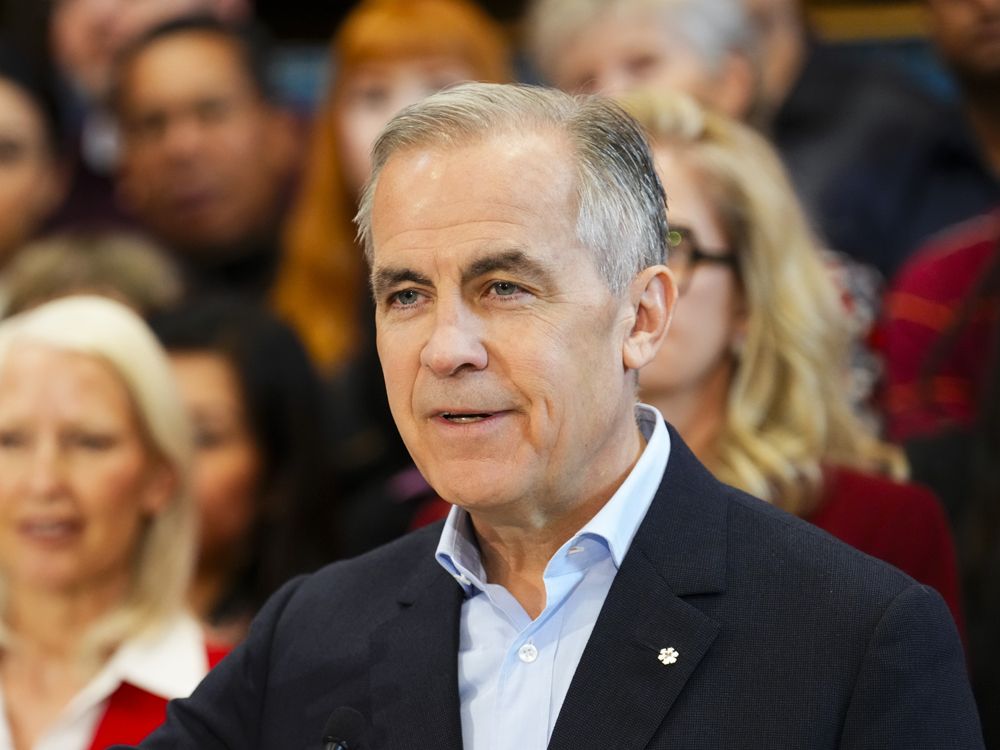Fed inclined to hold interest rates steady again at its next meeting

Article content
United States Federal Reserve chair Jerome Powell suggested the U.S. central bank is inclined to hold interest rates steady again at its next meeting while leaving open the possibility of another hike later if policymakers see further signs of resilient economic growth.
“Given the uncertainties and risks, and how far we have come, the committee is proceeding carefully,” Powell said in prepared remarks Oct. 19 to the Economic Club of New York. “We will make decisions about the extent of additional policy firming and how long policy will remain restrictive based on the totality of the incoming data, the evolving outlook, and the balance of risks.”
Advertisement 2
Article content
Article content
Powell also pointed to tightening financial conditions, driven by a rise in longer-term bond yields, and said “persistent changes in financial conditions can have implications for the path of monetary policy.”
Powell’s comments will likely affirm market expectations for the Federal Open Market Committee to hold interest rates steady for a second straight meeting when policymakers meet on Oct. 31 and Nov. 1. That would be the first consecutive skip in their 19-month campaign to tame inflation.
Yields on 2-year Treasuries declined after Powell spoke, while the dollar fell against a basket of major currencies. The S&P 500 index of stocks rose.
Protesters disrupt
Before beginning his remarks, Powell was briefly escorted out of the room after protesters interrupted the New York event. The demonstrators, who were standing arm in arm, were chanting “end fossil finance” and were forcibly removed from the stage before Powell returned.
Officials left their policy rate unchanged last month in a range of 5.25 per cent to 5.5 per cent and their forecasts showed 12 of 19 officials wanted one more hike this year. Powell was careful not to rule out the possibility of further tightening in his remarks.
Article content
Advertisement 3
Article content
“We are attentive to recent data showing the resilience of economic growth and demand for labour,” he said. “Additional evidence of persistently above-trend growth, or that tightness in the labour market is no longer easing, could put further progress on inflation at risk and could warrant further tightening of monetary policy.”
I think the evidence is not that policy is too tight right now
Jerome Powell
Speaking during a question-and-answer session, Powell added, “I think the evidence is not that policy is too tight right now.”
Core inflation, excluding volatile food and energy prices, has decelerated to just below four per cent on an annual basis and just below three per cent on a three-month annualized measure.
Economic strength
At the same time, recent economic data showed U.S. retail sales exceeded forecasts and industrial production strengthened in September, while nonfarm payroll gains have averaged 266,000 over the past three months, a robust pace.
Powell said the FOMC is “committed to achieving a stance of policy that is sufficiently restrictive to bring inflation sustainably down to two per cent over time” and holding it there until inflation is on that path, he said.
Advertisement 4
Article content
Three- and six-month measures of core inflation are running below three per cent, Powell said, but he warned that short-term measures are often volatile.
“In any case, inflation is still too high, and a few months of good data are only the beginning of what it will take to build confidence that inflation is moving down sustainably toward our goal,” he said.
Powell also said there’s evidence the Fed’s rate hikes are putting downward pressure on the economy, and said “there may still be meaningful tightening in the pipeline.”
He also cited key risks from geopolitical tensions, which he called “highly elevated.” He said he found the attack on Israel to be “horrifying, as is the prospect for more loss of innocent lives.”
‘Further softening’
The Fed chair said there are signs the labour market is cooling, though he repeated that a “sustainable” return to two per cent inflation “is likely to require a period of below-trend growth and some further softening in labour market conditions.”
The speed of the Powell tightening campaign has been the fastest since former chair Paul Volcker unleashed his attack on inflation in the late 1970s.
Advertisement 5
Article content
An abrupt rise in longer-term Treasury yields since July has prompted some Fed officials, such as vice chair Philip Jefferson, to focus more on overall financial conditions as they consider their next move. Two-year Treasury yields rose to a 17-year high Tuesday, while 10-year notes are near their peak for the year.
Fed officials have restated their intention to get inflation back to two per cent, though minutes of the September meeting now show they are also weighing the risk of too much restraint and sending the economy into a downturn.
Related Stories
“A range of uncertainties, both old and new, complicate our task of balancing the risk of tightening monetary policy too much against the risk of tightening too little,” Powell said.
—With assistance from Matthew Boesler.
Bloomberg.com
Article content
Fed’s Jerome Powell leaves door open for another interest rate hike
2023-10-19 17:35:32





Comments
Postmedia is committed to maintaining a lively but civil forum for discussion and encourage all readers to share their views on our articles. Comments may take up to an hour for moderation before appearing on the site. We ask you to keep your comments relevant and respectful. We have enabled email notifications—you will now receive an email if you receive a reply to your comment, there is an update to a comment thread you follow or if a user you follow comments. Visit our Community Guidelines for more information and details on how to adjust your email settings.